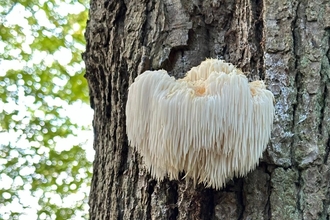Buglife, the RSPB and Kent Wildlife Trust have come together to save one of Kent’s most important wildlife sites. The three organisations are urging the Government’s environmental advisor Natural England to protect the site by declaring it a Site of Special Scientific Interest (SSSI). Today the groups presented a “Rationale for the SSSI designation of the Swanscombe Peninsula” to Natural England, alongside a letter signed by 77 current and former senior staff from nature organisations and public bodies.
Recent surveys have revealed that the Swanscombe Peninsula is home to more rare and threatened species than any other brownfield site in the UK – including the Critically Endangered Distinguished jumping spider (Attulus distinguendus), which is found on only one other site. However, this rich diversity of life is under-threat from plans to build a theme park. This development plan has, bizarrely, been deemed a Nationally Important Infrastructure Project, a process normally reserved for major roads, airports or power plants, that will allow it to bypass many of the normal planning requirements.
Swanscombe Peninsula is what is known as a brownfield site – a site that has formerly been developed, often for industrial use. However, this 465 hectare site has returned to nature over time – it has rewilded itself – and that process has produced a great bounty of wildlife riches. Many once widespread species call the site home, including over 250 rare and threatened invertebrate species such as the Endangered Duffey’s bell-head spider (Praestigia duffeyi), Brown-banded carder bee (Bombus humilis), Saltmarsh shortspur beetle (Anisodactylus poeciloides), and the Orange-striped water beetle (Graphoderus cinereus). Swanscombe Peninsula is also home to rare plants such as the Man orchid (Aceras anthropophorum), important breeding birds such as Nightingale and Black redstart, bats, reptiles and water voles.



